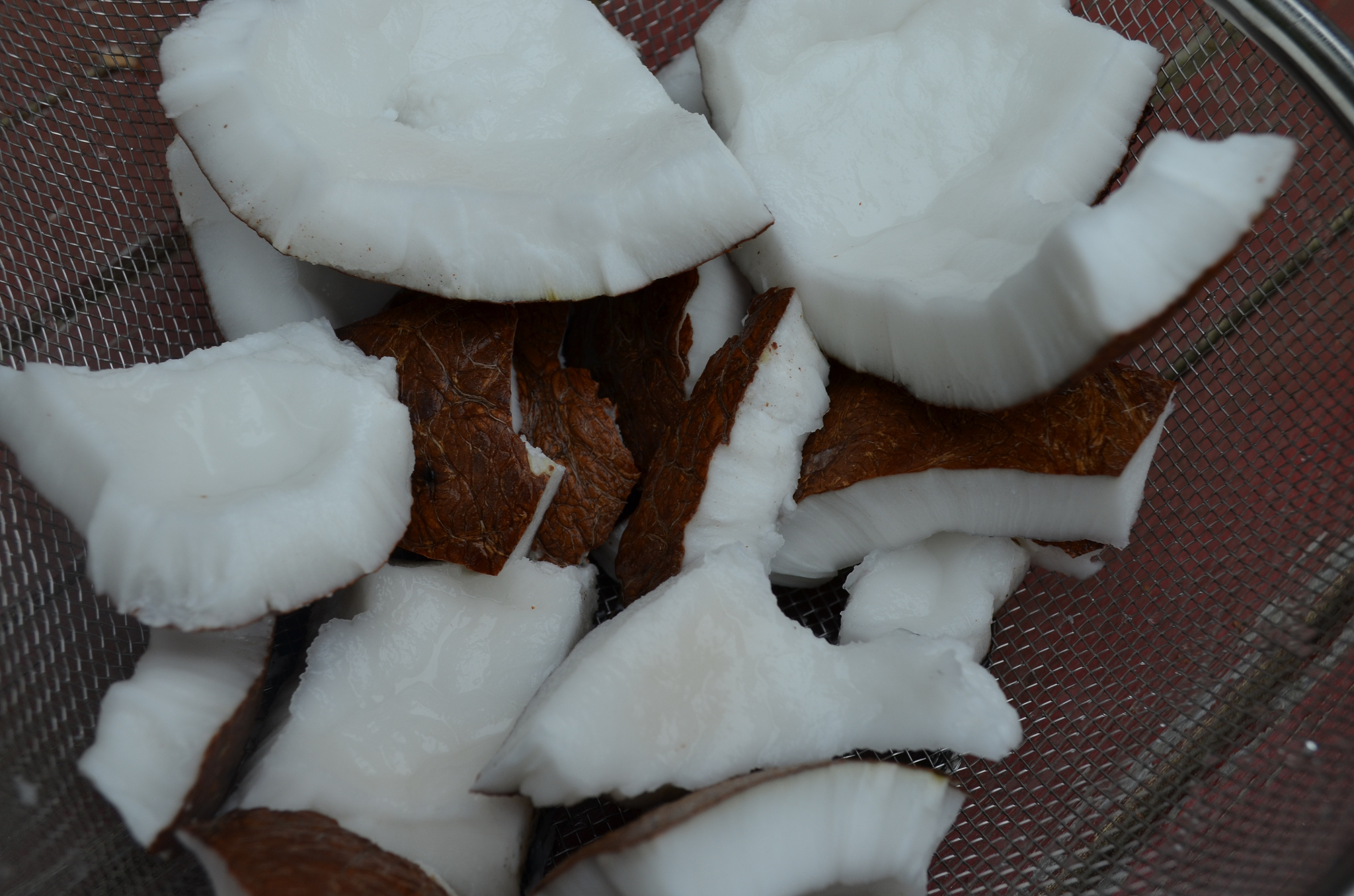The word “coconut” is attributed to the Portuguese and Spanish word “coco” which refers to a grinning face. The name refers to the face-like appearance at the base of the shell where three holes are located.
Our little “Coco” was so cute and tempting we couldn’t help but do this…
Or this…..”Aerobic Coco”!
“Tropical vacation Coco!”…..
“Cowboy Coco”…..
” Baby Coco”….
“Three-toed sloth Coco?”…..
Pretty silly, we know! But how fun!!
Coconuts are the fruit of the palm tree, which grow liberally in coastal regions of the tropical climates of Central America and the Caribbean. The outer layer of the coconut is green and fibrous. When this layer is pulled away, it reveals a hard, brown shell. Inside the shell is the fleshy, white edible layer which also contains the coconut “milk”. Both the coconut milk and the coconut flesh are used extensively in foods as well as in other health and skin care products. Coconuts are readily available in your local grocery store.
So, are you ready learn how to crack open a coconut? This project is fun and well worth the effort!
Materials
What you will need:
- a coconut
- a hammer
- an ice pick
-
- a glass for collecting coconut milk
- a straw (optional)
- a bowl for collecting the coconut flesh
- a peeler if you want to peel the rind off the coconut
Step 1: Using the hammer, tap the ice pick into the “eyes” of the coconut. Make sure you go through all of the layers.
Leverage and twist the ice pick around in the holes you just made in an effort to enlarge the size of the holes. Make the hole large enough to put a straw through it.
Allow a student to drink the milk if desired.
Coconut milk is often chilled on ice and sold by street vendors. Or empty coconut milk into a glass and save to use for homemade fruit juice.
Coconuts sold in stores today are often scored across the middle to aid in cracking the coconut open. Simply strike the coconut along the scored line with force several times, rotating to strike in various spots until the coconut cracks. If the coconut still has not cracked, use more force or set the coconut on a hard surface and strike. One final tip, a larger hammer will allow you to apply more force if you have a stubborn coconut. 
This technique still works, even on an un-scored coconut.
Place cracked coconut inside a plastic bag and strike with hammer a few more times to break into smaller pieces.
Use a knife to carve and “pop” the coconut flesh out of the shell.
Wash and cut up into pieces for students to sample.
























